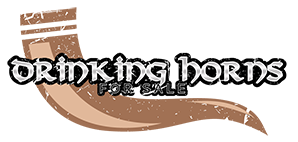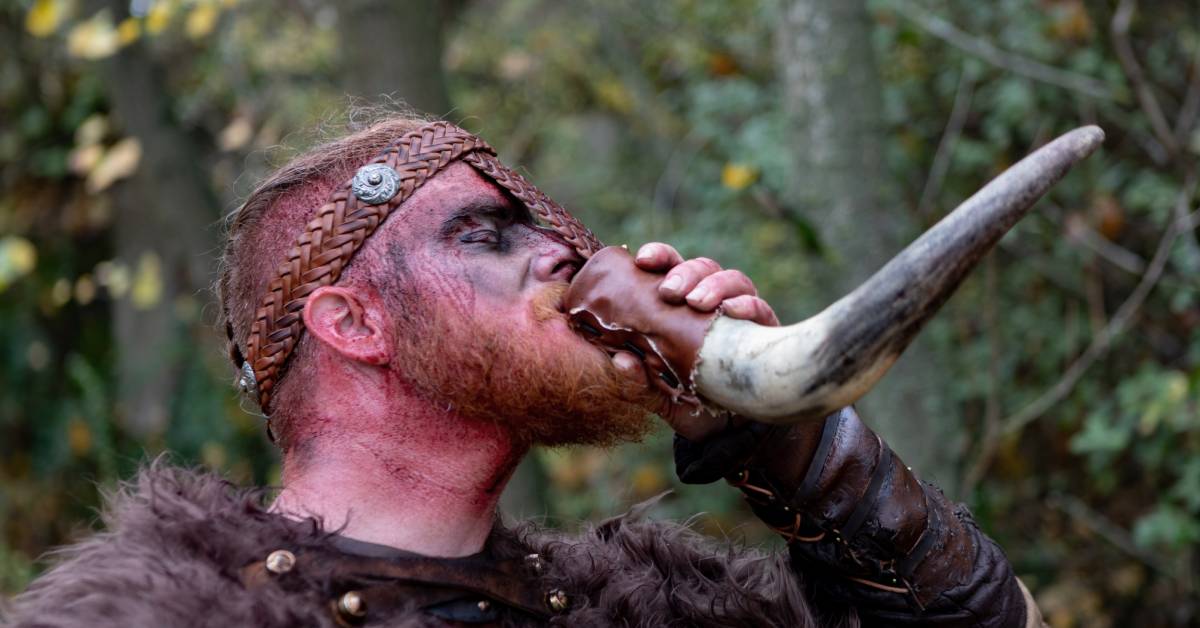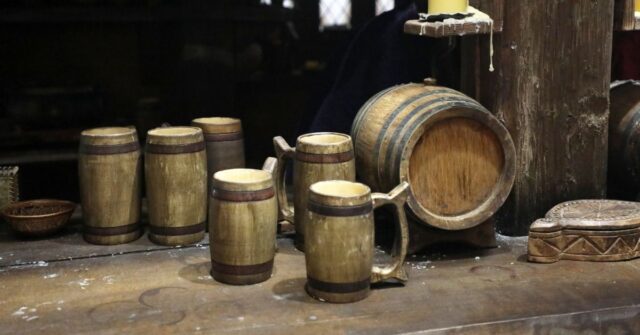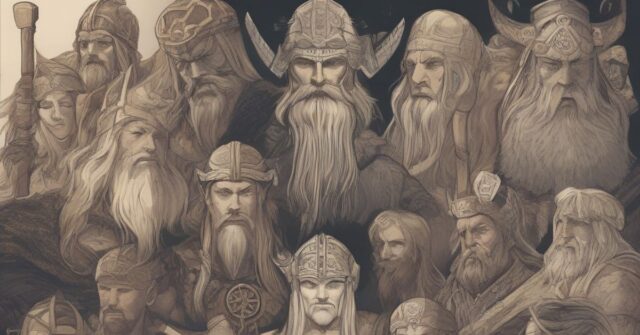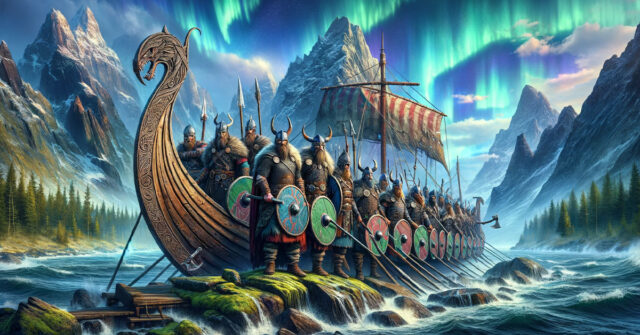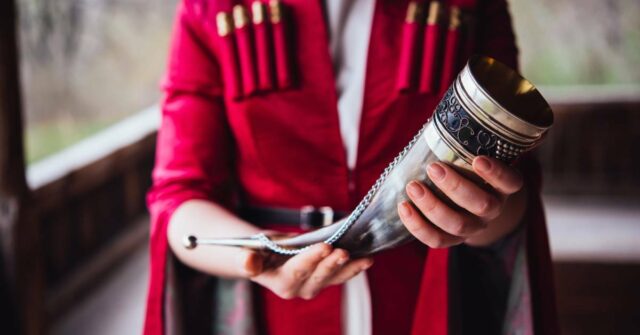The Vikings, a historical group of seafarers and explorers, are well-known for their rich cultural traditions and practices.
One such tradition is their affinity for drinking horns, which were not just vessels for ale and mead, but also potent symbols of status, honor, and fellowship.
This article delves deep into the relationship between the Vikings and their iconic drinking horns, tracing their historical context, craftsmanship, appearance in literature, and modern relevance.
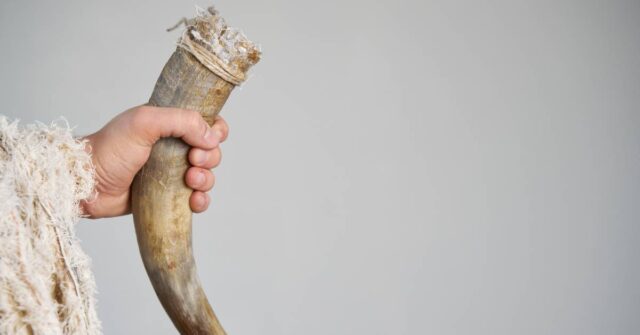
Introduction to Viking Drinking Horns
Viking drinking horns are steeped in tradition and symbolism.
Typically made from the horns of bovines, these vessels were often seen at Viking feasts and ceremonies, signifying not just the act of drinking, but also the shared bonds of community and kinship.
Their shapes, sizes, and decorations varied, reflecting the wealth and status of their owners.
The Symbolism of Drinking Horns in Viking Culture
In Viking society, drinking horns were more than just vessels for alcohol; they were rich in symbolism.
The act of drinking from the horn represented camaraderie and brotherhood, often accompanying oaths and declarations of loyalty.
Drinking horns also symbolized abundance and fertility, often depicted overflowing with mead, the drink of the gods in Norse mythology.
Types of Viking Drinking Horns
Viking drinking horns varied in type, largely depending on their intended usage and the wealth of the owner.
Some were simple and unadorned, used by the common folk, while others were intricately decorated with metals and gems, signifying high status.
Some drinking horns were specifically made for ceremonies, often larger and more lavishly adorned than everyday horns.
The Historical Context of Viking Drinking Horns
Drinking horns have a long history in many cultures, but they held a special place in Viking society.
They were integral to many aspects of daily life, from simple meals to grand feasts, from rites of passage to spiritual ceremonies.
Drinking Horns in Viking Ceremonies and Rituals
Drinking horns played a central role in Viking ceremonies and rituals. At weddings, it was customary for the newlyweds to drink from a shared horn as a symbol of their union.
During funerary rites, horns filled with mead or ale were often offered to the gods or poured onto the grave, a ritual believed to ensure a good afterlife for the deceased.
Drinking Horns in Viking Feasts
Viking feasts were boisterous events, characterized by merriment, storytelling, and of course, plenty of drinking.
Drinking horns were passed around the long tables, serving not just as drinking vessels, but also as symbols of status and hierarchy. The more ornate and large the horn, the higher the status of the drinker.
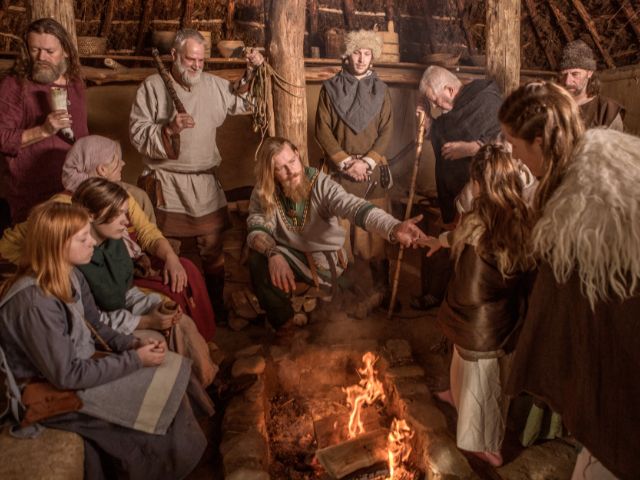
Role of Drinking Horns in Viking Voyages
Vikings, known for their seafaring expeditions, often brought drinking horns on their voyages. The horns served a dual purpose – as practical drinking vessels and as symbols of protection and good fortune.
Drinking ceremonies held aboard the ship were believed to appease the sea gods and ensure a successful voyage.
The Craftsmanship of Viking Drinking Horns
The artistry and craftsmanship involved in creating Viking drinking horns were remarkable. Each horn was uniquely crafted, often decorated with intricate carvings, metal inlays, and occasionally, precious gems.
They were not merely functional items but works of art that told stories and reflected the identity of their owners.
Materials Used for Making Viking Drinking Horns
Most Viking drinking horns were made from the horns of domesticated cattle, though occasionally other animals were used.
The raw horns were carefully selected, cleaned, and shaped, then decorated according to the owner’s preference and status.
Metalwork, particularly in silver and bronze, was a common adornment, and wealthier Vikings might have their horns decorated with gold or gemstones.
Artistry and Iconography on Viking Drinking Horns
The decorations on Viking drinking horns often carried symbolic meanings. Many were adorned with motifs from Norse mythology, while others featured geometric designs, animals, or scenes from daily life.
The artistry of these decorations not only showcased the skill of Viking craftsmen but also provided insights into Viking beliefs and values.
Techniques for Crafting Viking Drinking Horns
The process of crafting a Viking drinking horn required considerable skill and knowledge. It involved selecting and preparing the horn, shaping it into a functional vessel, and finally decorating it.
Techniques for decoration varied, including carving, engraving, and inlaying with metals or gems. These techniques reflect the high level of craftsmanship in Viking society.
Drinking Horns in Viking Literature and Mythology
Viking drinking horns also feature prominently in Norse literature and mythology, highlighting their cultural significance.
They appear in epic sagas and mythological tales, often associated with gods, heroes, and legendary feats.
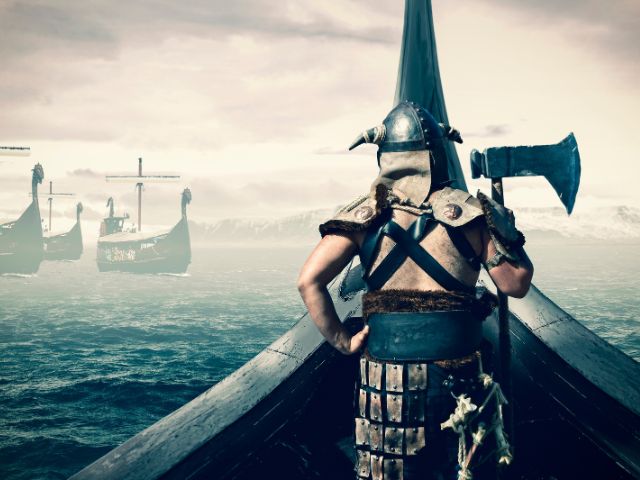
Notable Mentions of Drinking Horns in Viking Sagas
Drinking horns are frequently mentioned in the Viking sagas, highlighting their importance in society.
For example, in the Saga of the Ynglings, King Ingjald uses a drinking horn in a plot to eliminate his rivals, while in the Saga of Egil Skallagrimsson, a drinking horn serves as a symbol of defiance against King Eirik Bloodaxe.
Drinking Horns and Norse Gods
Drinking horns are also associated with the Norse gods. The most famous example is the Mead of Poetry, a mythical beverage that grants the drinker the skill of a scholar or poet.
This mead is often depicted as being served in a drinking horn. Similarly, the god Thor is said to have attempted to drink from a horn containing all the seas, mistakenly thinking it to be mere ale.
The Decline and Resurgence of Drinking Horns
Despite their historical significance, the use of drinking horns in Scandinavia declined after the Viking Age, likely due to changes in society and culture.
However, in recent years, there has been a resurgence of interest in these fascinating items, particularly among those with an interest in Viking history and culture.
Reasons for the Decline of Drinking Horn Use
The use of drinking horns declined post-Viking Age due to various factors.
The Christianization of Scandinavia played a significant role, as the church promoted the use of chalices over pagan drinking horns.
Changes in societal structures and drinking habits also contributed to the decline. Eventually, drinking horns became more of a symbol of the past, rather than a part of everyday life.
Drinking Horns in Modern Viking Reenactments and Festivals
Despite their decline, drinking horns have made a comeback in recent years, particularly at Viking reenactments and festivals.
Participants often use replicas of Viking drinking horns, embracing their historical and cultural significance.
These events have helped to popularize drinking horns, leading to a renewed interest in their history and craftsmanship.
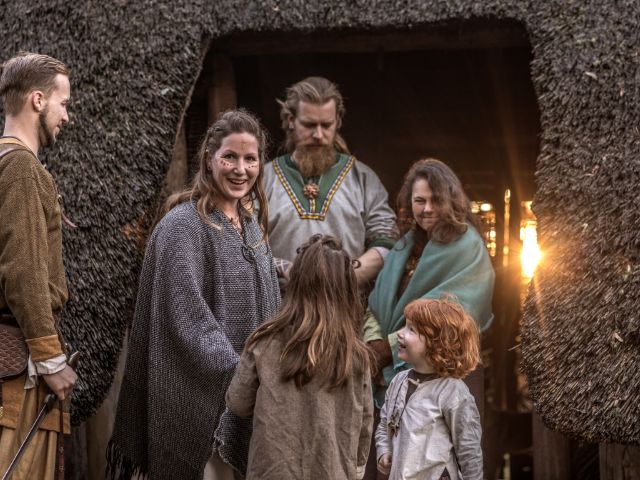
Drinking Horns as Contemporary Cultural Symbols
Today, drinking horns are often seen as symbols of Viking culture and heritage.
They are popular souvenirs in Scandinavian countries and are frequently used in branding and artwork associated with Viking history.
Some people even use them in their homes, either for actual drinking or as decorative pieces that pay tribute to the Viking era.
Preservation and Display of Historic Viking Drinking Horns
While many historical Viking drinking horns have been lost to time, those that remain are treasured artifacts.
They are often displayed in museums, serving as tangible reminders of Viking culture and craftsmanship.
Preservation efforts are critical in ensuring that these valuable pieces of history can be appreciated by future generations.
Major Collections of Viking Drinking Horns
Several museums around the world house significant collections of Viking drinking horns.
These include the National Museum of Denmark in Copenhagen, the British Museum in London, and the Historical Museum in Oslo, among others.
These collections provide a unique opportunity to study the artistry and craftsmanship of Viking-era drinking horns.
Considerations in Preserving and Restoring Viking Drinking Horns
Preserving and restoring Viking drinking horns present unique challenges. These artifacts are often fragile and susceptible to damage from light, temperature fluctuations, and humidity.
Therefore, proper care is critical, including controlled environments and careful handling.
Additionally, restorations should be done with minimal intervention to preserve the original material and craftsmanship.
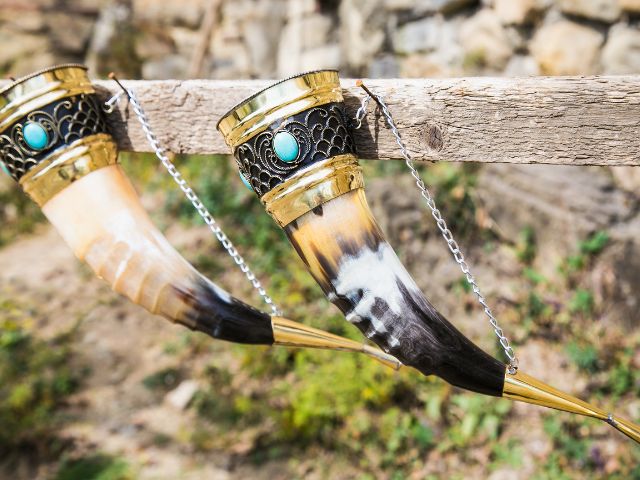
Conclusion: The Lasting Impact of Viking Drinking Horns
The Viking love affair with drinking horns is a testament to their rich cultural history and tradition.
Although their use declined over time, these fascinating items continue to captivate our imagination today.
They offer a glimpse into the world of the Vikings – their ceremonies, their craftsmanship, and their way of life. As such, Viking drinking horns are not just historical artifacts, but enduring symbols of a bygone era.
